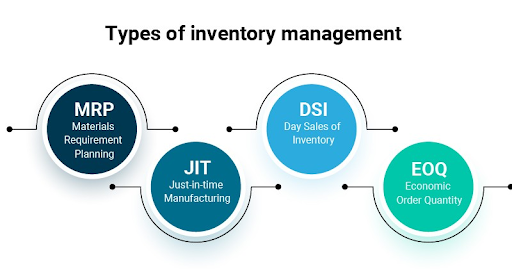Inventory management is an essential aspect of running a successful business, regardless of its size or industry. A well-managed inventory system helps to optimize stock levels, prevent stock outs, and reduce working capital investment. It is crucial to understand the different types of inventory systems available to choose the most suitable one for your business.
1) Periodic Inventory System: This is the most basic inventory system where regular physical counts of inventory are performed at specific intervals, such as weekly, monthly, or quarterly. The inventory balances are then adjusted to reflect the physical count. This system is suitable for businesses with low inventory levels, as manual counting can be time-consuming and prone to errors.
2) Perpetual Inventory System: Unlike the periodic inventory system, the perpetual system continuously tracks inventory levels in real-time. This system uses technology such as barcodes and RFID tags to record inventory movements, making it more accurate and efficient. It provides businesses with detailed information on their inventory levels and helps them make timely purchasing decisions.
3) Just-in-Time (JIT) Inventory System: This inventory system focuses on keeping inventory levels low by ordering goods only when needed. The goal of JIT is to minimize inventory holding costs while still meeting customer demand. This system is suitable for businesses with steady and predictable demand and requires strong relationships with reliable suppliers.
4) ABC Analysis Inventory System: The ABC analysis classifies inventory items into categories based on their value. 'A' items are high-value with low sales volume, 'B' items are moderate-value with moderate sales volume, and 'C' items are low-value with high sales volume. This system helps businesses determine which items are critical to their inventory and requires close monitoring.
5) Drop-shipping Inventory System: This system eliminates the need to store inventory physically. Instead, a customer places an order with the business, and the supplier ships the product directly to the customer. This system reduces inventory costs but requires efficient communication between the business and its suppliers.
6) Cross-docking Inventory System: This system is similar to drop-shipping, but instead of shipping directly to the customer, the products are temporarily stored at a cross-docking warehouse before being shipped to their final destination. It is suitable for businesses that receive large quantities of goods from suppliers and need to quickly distribute them to customers.
7) Consignment Inventory System: This system allows businesses to keep goods in their inventory without paying for them until they are sold. The supplier retains ownership of the goods until they are purchased by a customer, reducing the risk for the business and freeing up capital for other investments.
8) Vendor-managed Inventory (VMI) System: Under this system, the supplier is responsible for managing inventory levels on behalf of the business. The supplier regularly monitors inventory levels and restocks the inventory when necessary. VMI is suitable for businesses with a close relationship with the supplier and a consistent demand for goods.
In conclusion, choosing the right inventory system for your business is crucial to maintain optimum stock levels and ensure customer satisfaction. Businesses must carefully evaluate their needs and available resources to determine the most suitable inventory system. Implementing an efficient inventory system can significantly improve overall operations and contribute to the success of a business.

